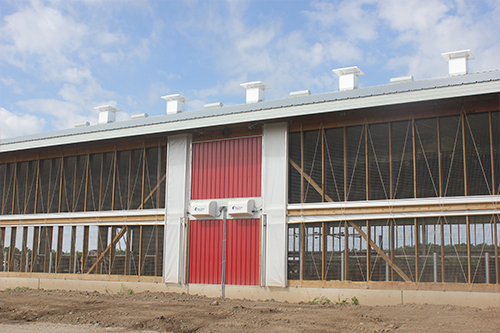Education
Natural Ventilation
All livestock and poultry buildings require continuous ventilation 365 days of the year to maintain a healthy and productive environment. Since there are so many choices for ventilating a particular building, it is important to consider all the options available.
The ventilation requirements of livestock buildings are the same for either natural or fan ventilated buildings. Sufficient ventilation is needed in the summer to prevent excessive temperature rise in the room, and in the winter to prevent build up of moisture and gases.
Naturally ventilated buildings depend upon the natural forces of wind and temperature difference (chimney effect) to move air. Wind can blow air through openings in the wall on the windward side of the building, and suck air out of openings on the leeward side and the roof. Temperature differences between warm air inside and cool air outside can cause the air in the room to rise and exit at the ceiling or ridge, and enter via lower openings in the wall. Overall ventilation is due to the combination of the wind and chimney effects.
What are the Advantages to Natural Ventilation?
- 85% Reduction in Cost of Electricity
- Reduced Dust
- Reduced Heating Cost
- 15 Year Warranty
- Reduced Operating Costs
- Reduced Noise Level
- Improved Odour and Humidity Control
- Ventilation Functions in the Event of a Power Failure
- Daylight Brightens Buildings
- Summer Ventilation Rates are High
Since there are fewer moving parts to a natural ventilation system, maintenance and related costs are lower than with a fan system.
All ventilation systems operate on the principle of heat balance. In warmer seasons, the temperature of a building will rise exponentially if not adequately ventilated and insulated. This heat rise is caused by outdoor climate conditions and heat produced by the animals. In colder seasons, heat balance is required to offset the heat loss from the building caused by outer climate conditions as well as the heat produced by the animals. Heat balance is required to maintain the livestock and poultry's optimum comfort level.
